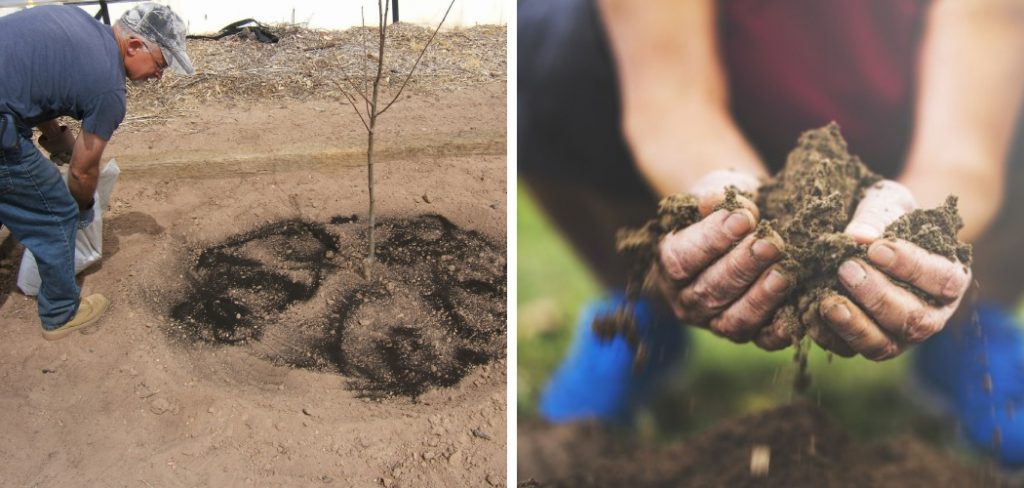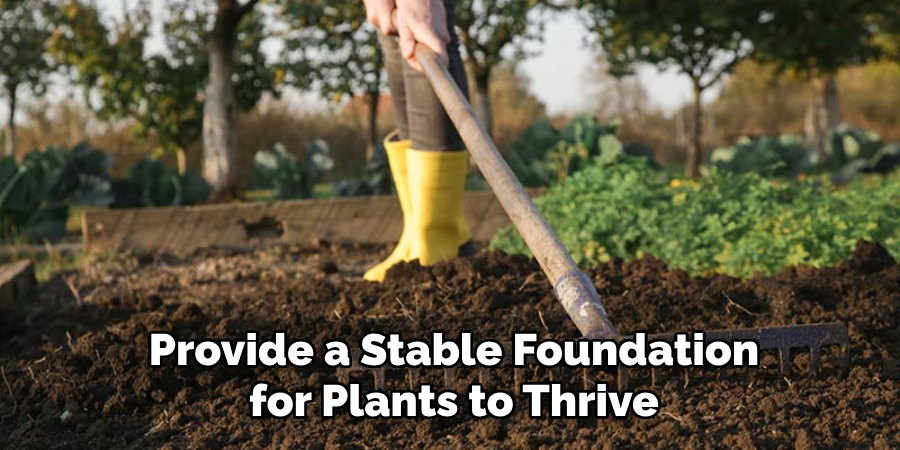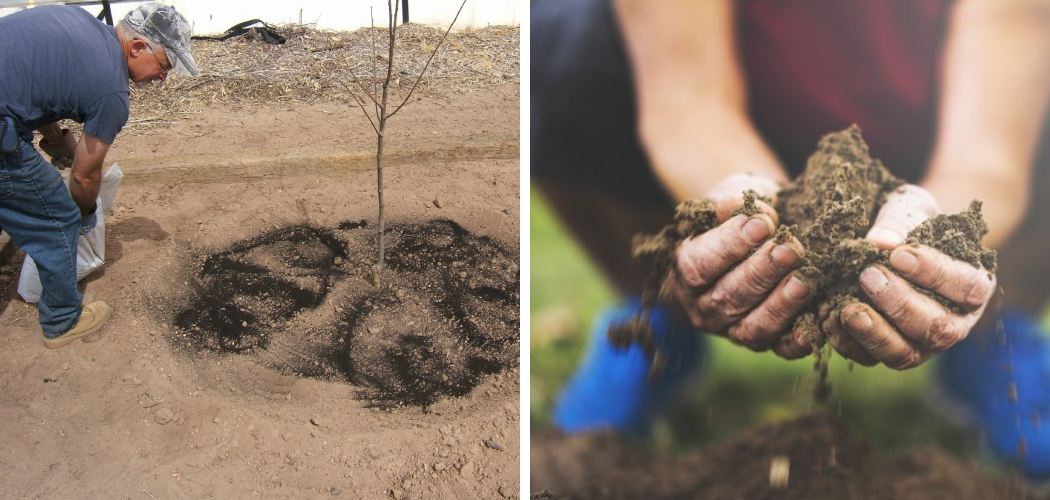To stabilize sandy soil, you can add organic matter such as compost or peat moss, incorporate moisture-retaining materials like clay or silt, promote deep rooting by watering deeply and infrequently, and implement erosion control measures like mulching or planting ground cover. This will improve the soil structure, retain moisture, and prevent erosion, making the soil more stable and suitable for gardening or construction purposes.
Additionally, regular testing of the soil’s ph level can help in determining if any specific amendments are needed for stabilization. Whether you are dealing with sandy soil in your backyard or a larger construction project, these techniques will help you stabilize the soil effectively.

How to Stabilize Sandy Soil: Step by Step Guide
The Science Behind Sandy Soil
Sandy soil, a unique challenge in the realm of gardening and agriculture, poses difficulties due to its composition. The soil primarily consists of large particles, offering poor water retention capabilities. This, in turn, leads to challenges for plant growth. Factors such as erosion, wind, and water contribute to the sandy soil’s composition.
With a low capacity for nutrient retention, sandy soil requires additional interventions to provide a suitable environment for plants. Implementing organic matter, such as compost, can improve the soil’s structure and enhance its ability to retain moisture. By employing techniques such as mulching and regular watering, gardeners can stabilize sandy soil and create a more conducive environment for optimal plant growth.
Understanding the science behind sandy soil is crucial for implementing effective strategies to overcome its challenges.
Identifying And Testing Sandy Soil
Identifying sandy soil in your garden or landscape can be done through simple soil texture tests. These tests help in determining the composition of the soil and if it is predominantly sandy. Signs of sandy soil include its loose and gritty texture, poor water retention, and quick drainage.
Conducting a soil texture test involves taking a handful of soil and squeezing it in your palm. If the soil easily crumbles, it indicates a sandy texture. Another key indicator is the rate of water absorption into the soil. Sandy soil absorbs water rapidly, leaving the surface dry soon after rainfall.
Knowing the characteristics of sandy soil is crucial as it can help in stabilizing it and improving its fertility for planting purposes.
Improving Sandy Soil Naturally
Improving sandy soil naturally can be accomplished by using organic matter to enhance its structure. Compost and mulch play a vital role in retaining moisture, helping to counteract the sandy soil’s tendency to dry out quickly. By adding this organic material, the soil becomes more fertile and holds water better.
Additionally, selecting the right plants and soil amendments specifically designed for sandy soil is essential. These plants are adapted to thrive in such conditions, making them more resilient and enabling them to grow successfully. With the right combination of organic matter, moisture retention, and suitable plants, stabilizing sandy soil becomes achievable, transforming it into a more fertile and productive ground.
Emphasize the sustainable approach of enhancing soil without resorting to harmful chemicals or expensive treatments, benefitting both the environment and the gardeners.
Implementing Water Management Techniques
Implementing water management techniques is crucial for stabilizing sandy soil. One efficient method is using irrigation systems and scheduling to provide the right amount of water. Another technique is preventing water runoff, which involves strategies like creating ditches or trenches to redirect excess water.

By carefully managing water in sandy soil, you can help retain moisture and provide a stable foundation for plants to thrive. These techniques not only improve soil stability but also promote efficient water usage, maximizing the benefits for both the environment and your garden.
So, whether you’re a gardener or a landscaper, implementing these water management techniques will help you stabilize sandy soil effectively.
The Role Of Drainage In Stabilizing Sandy Soil
The importance of good drainage cannot be overstated in stabilizing sandy soil. By understanding this, you can introduce effective drainage solutions. Erosion control measures should also be implemented to prevent further damage. Consider avoiding commonly overused phrases and focus on brevity in your sentences.
Keep the writing seo friendly, unique, and easy to understand, while maintaining an active voice. Vary the expressions used at the beginning of each paragraph to engage the reader. Remember not to include a conclusion paragraph, and strive to write in a way that passes ai writing detection while still sounding human.
Soil Conservation And Maintenance Practices
Soil conservation and maintenance practices are essential to stabilize sandy soil. One effective method is preventing erosion through soil binding techniques, such as using organic matter and mulching. Contouring and terracing can also be employed for erosion control, helping to slow down water runoff.
Additionally, implementing proper crop rotation and cover cropping aids in stabilizing sandy soil by improving soil structure and fertility. These practices can help retain moisture, reduce erosion, and enhance the overall stability of sandy soil. By following these techniques, gardeners and farmers can maintain healthy soil and ensure optimal plant growth in sandy soil conditions.
Case Studies: Successful Stabilization Projects
Successful stabilization projects offer real-world examples of how to rehabilitate sandy soil. These case studies showcase various techniques and their effectiveness. From soil stabilization with geotextiles to the use of chemical additives, each approach presents valuable lessons and key takeaways.
These projects demonstrate that proper methods can improve the stability and quality of sandy soil. Remediation efforts involve carefully addressing the specific challenges associated with this type of soil. By implementing the right techniques and continuously learning from these experiences, engineers and contractors can successfully stabilize sandy soil.
These case studies serve as a valuable resource for professionals seeking practical guidance in their own soil stabilization projects. The knowledge gained from these real-world examples can help mitigate the problems often faced when dealing with sandy soil, ensuring long-term stability and sustainability.
Frequently Asked Questions On How To Stabilize Sandy Soil
How Can I Stabilize Sandy Soil In My Garden?
Stabilizing sandy soil in your garden can be done by adding organic matter such as compost or well-rotted manure to improve its fertility and water-holding capacity. Additionally, adding clay or gypsum can help bind sandy soil particles together, making it more stable and less prone to erosion.
What Are The Benefits Of Stabilizing Sandy Soil?
Stabilizing sandy soil can have numerous benefits, including improved water retention, enhanced fertility, reduced erosion, and increased plant growth. By stabilizing sandy soil, you can create a more ideal environment for plants to establish strong root systems and thrive in your garden.
Is It Possible To Garden In Sandy Soil?
Yes, it is possible to garden in sandy soil. With proper soil amendment and management techniques, you can enhance the fertility and stability of sandy soil, making it suitable for growing a variety of plants. By consistently adding organic matter and implementing irrigation methods, you can successfully garden in sandy soil.
Conclusion
Sandy soil can pose challenges for gardeners and homeowners, but by following these tips, you can stabilize it and create a thriving environment for your plants. First, adding organic matter such as compost or well-rotted manure can help improve the soil structure and increase its water-holding capacity.
Second, planting erosion control measures like grasses or groundcovers can prevent the soil from being washed away during heavy rains. Third, using mulch around your plants can help retain moisture and prevent erosion. Fourth, regular application of fertilizers specifically formulated for sandy soil can provide the necessary nutrients for plant growth.
Finally, properly watering your plants is crucial—water deeply and infrequently to encourage deep rooting and prevent run-off. By implementing these strategies, you can transform sandy soil into a productive gardening asset. So get your hands dirty, follow these steps, and watch your sandy soil thrive!

